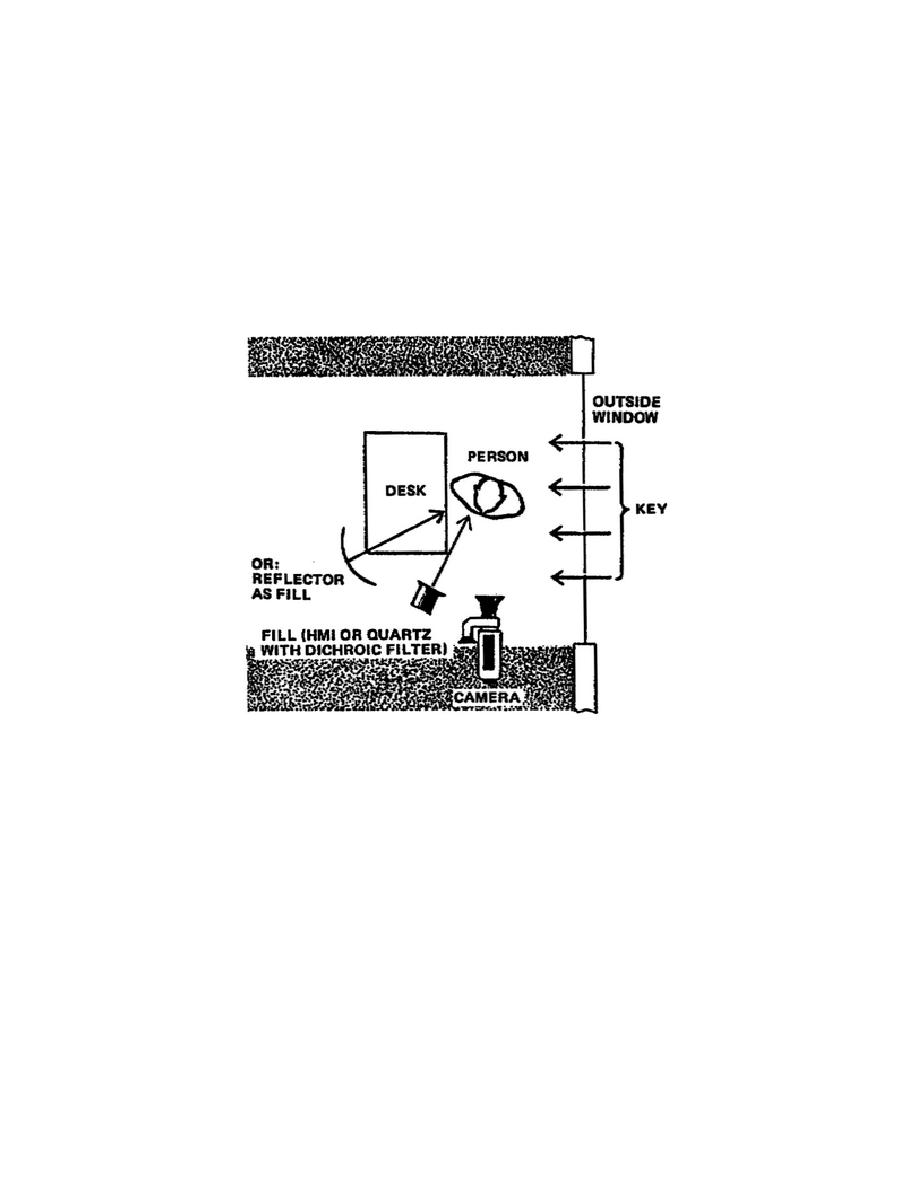
used to change light intensity and color temperature.
Even though they are
very effective, these filter sheets are not used very often primarily because
of the cost associated with them, or the time that is required to put them in
place.
c. Another possible method of handling this situation is to shoot your
subject with the window to his side, rather than to his rear and use a
reflector or a portable lighting instrument with a daylight dichroic filter
attached to it as an additional light source (fig 3-3). By using this method,
the daylight coming through the window is used as the key light and the
additional light source or reflector is the fill light. As you can see, this
allows the daylight coming through the window to be used as part of the set
lighting, rather than a hindrance to it.
Figure 3-3.
Using daylight from a window as the key light
3. The problem of working under fluorescent lights is their color temperature.
It is always higher than the standard of incandescent lights (3200K). So, if
you use additional lighting instruments, you are once again confronted with two
color temperatures. Some lighting people advise turning the fluorescent lights
off altogether when using quartz lights (3200K), but this is not always
practical.
If you are shooting a fast-breaking story, you just won't have
time, first, to locate the building manager and persuade him to turn off the
lights, then relight the scene before you start shooting.
a. If you have to use a quartz light for additional illumination, either
boost the color temperature of the quartz light (using a dichroic filter) or
adjust the camera using the illumination provided by the quartz light (3200K).
Generally, a quartz light, such as a sun gun, is strong enough to "wash out"
the bluish tint emitted by the fluorescent base light. Even if you could turn
off the fluorescent lights, you might want to leave them on to
32


 Previous Page
Previous Page
